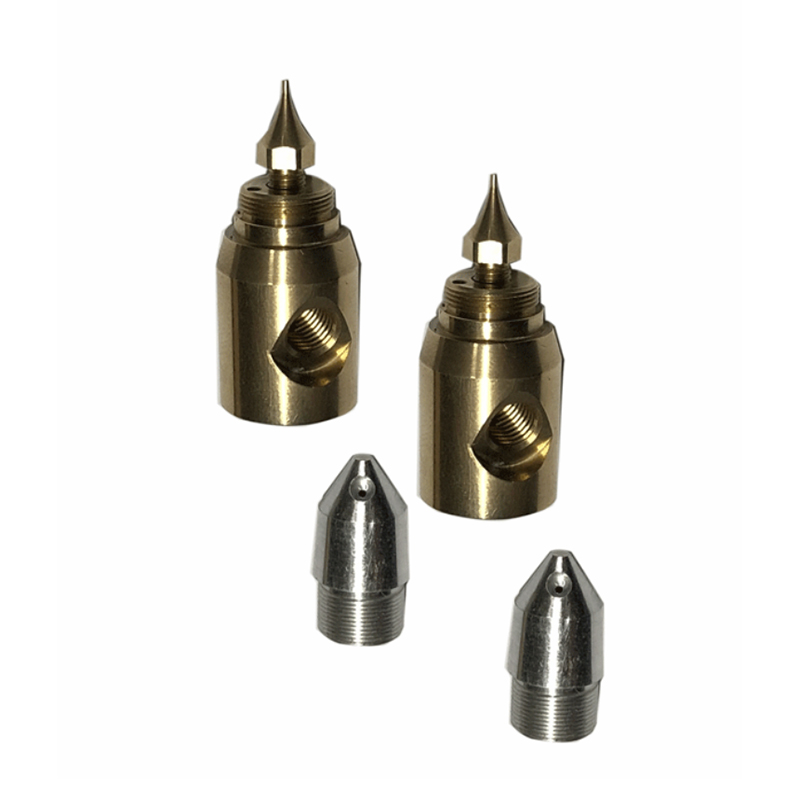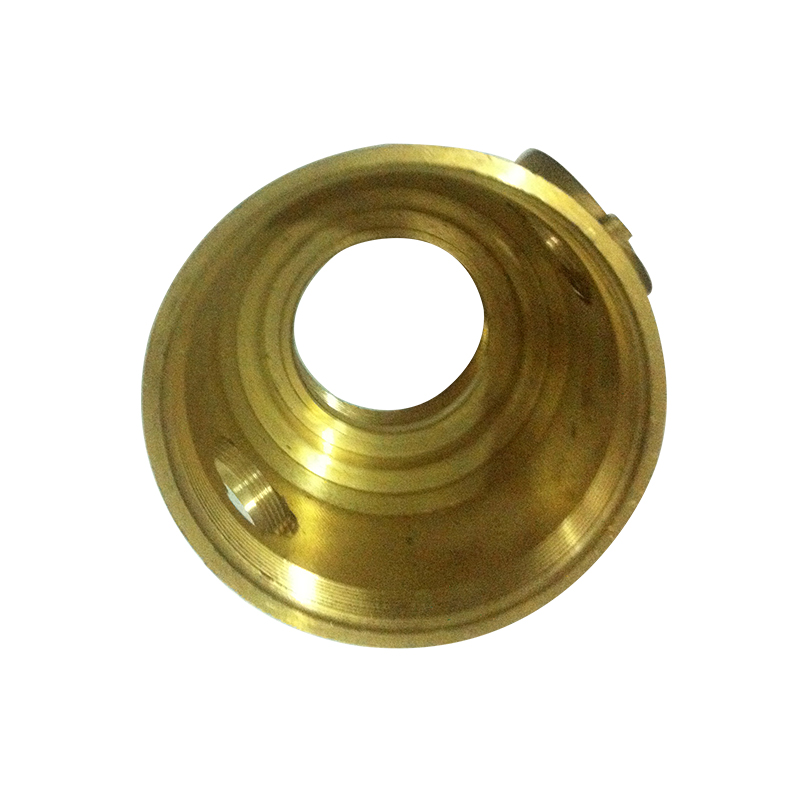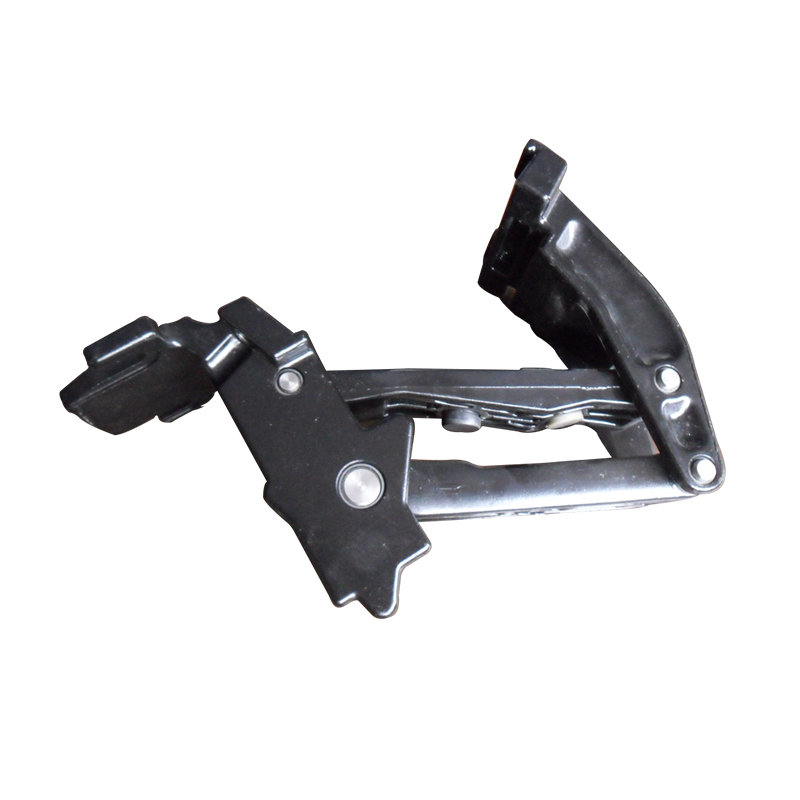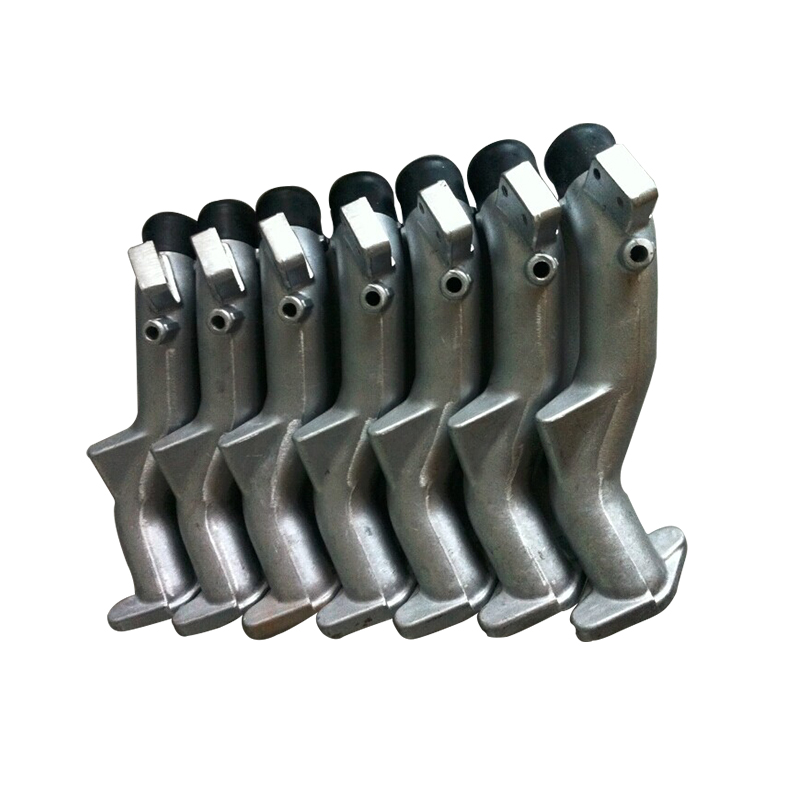What Is CNC Machining?
Computer Numeric Control (CNC) Machining is one of the most popular manufacturing techniques that use automated tools to generate the needed shapes and parts. What is CNC machining or how it works is a common question that anyone associated with the industry should know about.
The following text will take a look at the basics of CNC machining and briefly discuss its major applications across different industries.
Overview of CNC Machining
CNC machining, controlled by computers, produces high-precision parts and components. In this process, a computer program controls the movement of the cutting tools, which the program controls to remove material from a workpiece to create a finished part.
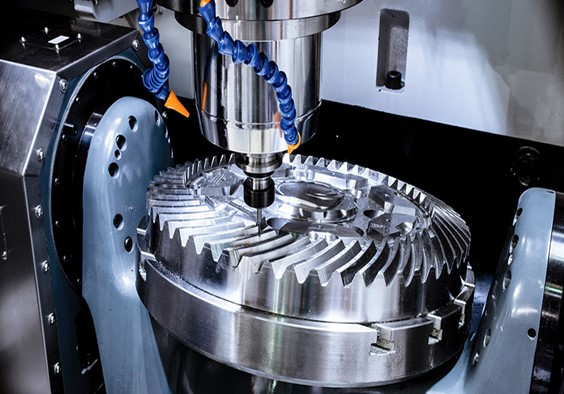
CNC machining produces an array of parts and components, including those made from metal, plastic, and other materials. The process can also produce parts with complex geometries and high levels of precision, making it a popular choice for applications in numerous industries, including aerospace, automotive, medical devices, and consumer products.
CNC machining offers several advantages over traditional machining methods, including improved accuracy, consistency, and speed, as well as the ability to produce complex geometries and intricate details. It also allows for the use of advanced cutting tools and techniques, such as multi-axis machining and high-speed machining, which can further improve the efficiency and quality of the process.
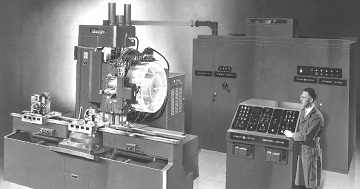
CNC (Computer Numerical Control) machining is a manufacturing process that involves the use of computer-controlled machines to create precise and complex parts from various materials. The history of CNC machining spans several decades and has revolutionized the manufacturing industry. Here is an overview of the key milestones in the development of CNC machining:
-
Early Numerical Control: The foundations of CNC machining can be traced back to the development of early numerical control (NC) systems in the late 1940s and early 1950s. These systems utilized punched paper tapes with coded instructions to control machine tools.
-
Introduction of Computer Controls: In the 1960s, the integration of computers into the control systems marked a significant advancement in CNC machining. Computer controls allowed for greater programming flexibility and increased automation.
-
MIT's Servomechanisms Laboratory: In the 1950s and 1960s, MIT's Servomechanisms Laboratory played a pivotal role in the development of CNC technology. They introduced the concept of using computers to control machine tools, laying the foundation for modern CNC machining.
-
APT Programming Language: In the 1960s, the development of the Automatically Programmed Tooling (APT) language revolutionized CNC machining programming. APT provided a standardized and machine-independent language for creating instructions for machine tools.
-
CAD/CAM Integration: In the 1970s, the integration of Computer-Aided Design (CAD) and Computer-Aided Manufacturing (CAM) systems with CNC machines further enhanced the capabilities of CNC machining. CAD/CAM systems allowed for the creation of digital designs that could be directly translated into machine instructions.
-
CNC Machine Tool Advancements: Throughout the 1970s and 1980s, advancements in CNC machine tool technology led to increased precision, speed, and versatility. The development of multi-axis machining centers allowed for complex operations and reduced the need for manual intervention.
-
Miniaturization and Micro-Machining: In the 1980s and 1990s, CNC machining expanded into miniaturization and micro-machining applications. The ability to create extremely small and intricate parts opened up new possibilities in industries such as electronics and medical devices.
-
Advancements in Software and Control Systems: The late 1990s and early 2000s witnessed significant advancements in CNC machining software and control systems. These advancements included improved user interfaces, simulation capabilities, and real-time monitoring of machining processes.
-
Automation and Robotics: In recent years, there has been a growing trend towards automation and the integration of robotics in CNC machining. Robotic systems are being used to load and unload parts, perform tool changes, and handle repetitive tasks, increasing efficiency and productivity.
Today, CNC machining is a fundamental technology in various industries, including aerospace, automotive, electronics, and medical manufacturing. It continues to evolve with advancements in machine tool technology, software capabilities, and automation, driving innovation and precision in the manufacturing process.
CNC (Computer Numerical Control) machining is a process that uses computer-controlled machines to create precise and complex parts from various materials. Here is an overview of how CNC machining works:
-
Design: The process begins with the creation of a digital design using Computer-Aided Design (CAD) software. The design specifies the dimensions, shape, and features of the part to be machined.
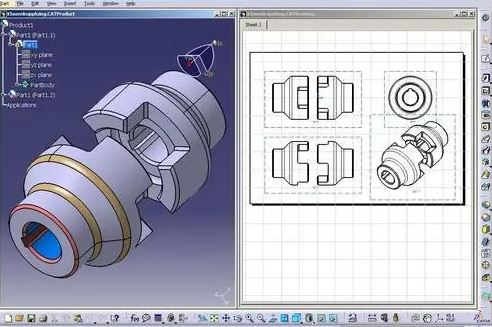
-
CAM Programming: Once the design is complete, the CAD file is imported into Computer-Aided Manufacturing (CAM) software. The CAM software generates the toolpaths and instructions that will guide the CNC machine during the machining process.
-
Machine Setup: The CNC machine is set up with the appropriate cutting tools and workholding devices required for the specific job. This includes mounting the material to be machined securely in place.
-
Toolpath Generation: The CAM software generates the toolpaths based on the design specifications. Toolpaths define the cutting operations, tool movements, and feed rates necessary to shape the part accurately.
-
Machine Operation: With the CNC machine and toolpaths ready, the operator initiates the machining process. The CNC machine is controlled by a computer program that interprets the toolpath instructions and sends signals to the machine's motors and actuators.
-
Material Removal: The cutting tools, such as drills, end mills, or lathes, rotate at high speeds and remove material from the workpiece based on the programmed toolpaths. The cutting tools can move along multiple axes (X, Y, and Z) simultaneously, enabling complex machining operations.
-
Feed Rate and Speed Control: The CNC machine adjusts the feed rate (the speed at which the cutting tool moves through the material) and spindle speed (the rotational speed of the cutting tool) according to the programmed instructions. These parameters are optimized to ensure efficient material removal and desired surface finish.
-
Precision and Accuracy: CNC machines are capable of achieving high levels of precision and accuracy. They can repeat operations with consistent results, ensuring the production of identical parts within tight tolerances.
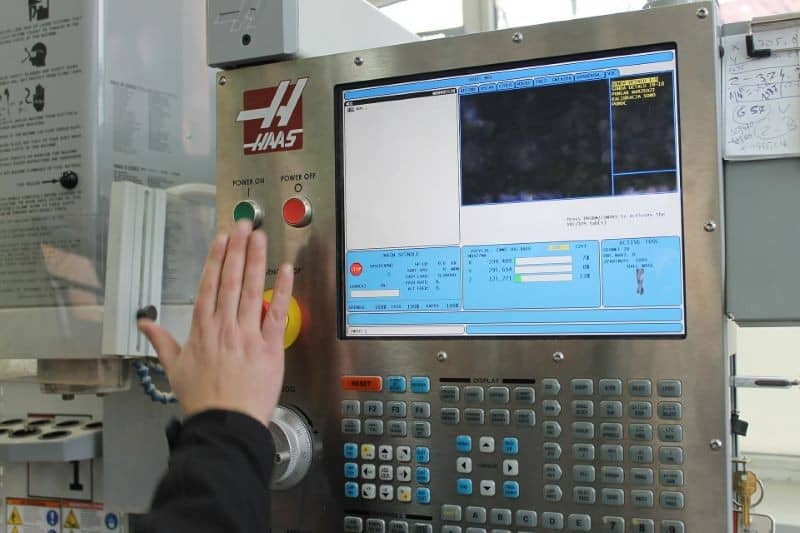
-
Process Monitoring: Advanced CNC machines incorporate sensors and monitoring systems to measure various parameters during the machining process. This allows for real-time monitoring of tool wear, temperature, and other factors, ensuring quality control and preventing errors or tool failures.
-
Finishing Operations: After the primary machining is complete, secondary operations such as deburring, polishing, or surface treatment may be performed to achieve the desired final appearance and functionality of the part.
CNC machining offers numerous advantages, including high precision, repeatability, and the ability to create complex geometries. It is widely used in various industries, ranging from automotive and aerospace to electronics and medical manufacturing.
Common CNC Operations Across the Industry
The CNC machining process is not monotonous as different operations are depending on the requirement. In some cases, it’s possible to obtain the required shape with a single operation like milling. However, it’s only possible for very simple designs. Generally, the more complex a design is, the more variety of operations it will need.
Here are a few main CNC machining operations that are common across the industry.
CNC Milling
CNC Milling machines operate on the perpendicular axis and use a rotatory cutting tool to create different shapes or products. The process is quite common in multiple industries ranging from automotive, aerospace, medical devices, and other consumer products.
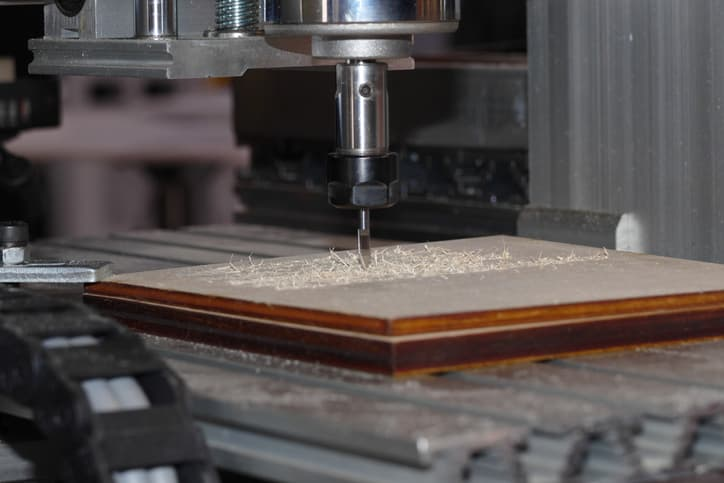
One thing that makes CNC milling process different is workpiece placement. Typically, the workpiece remains stationary and the cutting tool moves around in different directions. The cutting tool moves according to the computer program and removes material accordingly.
The cutting tools can be rotated at high speeds to create precise cuts and shapes, and the machine can be programmed to make multiple passes to achieve the desired final product.
CNC Turning
CNC turning is another integral operation that creates cylindrical parts with high levels of accuracy and precision. The turing process itself is quite simple. Mount the cylindrical part on the machine, which will rotate and the cutting tool would be along the perpendicular and rotational axis.
CNC turning is a common process in the production of different components, including engine parts, shafts, bushings, and gears. The process offers several advantages over traditional manual turning, including increased consistency, repeatability, and efficiency.
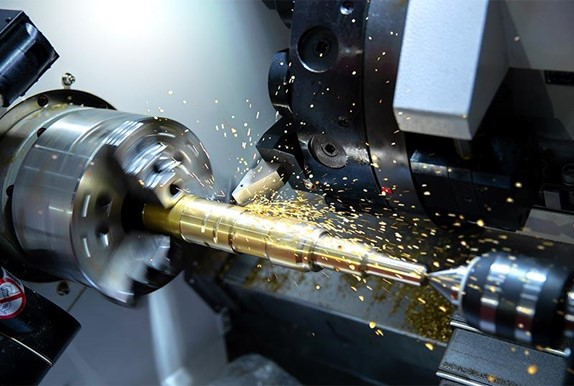
There are several types of CNC turning machines, including lathes, turning centers, and Swiss-style lathes. The choice of machine and cutting tool will depend on the specific requirements of the workpiece and the desired end product.
CNC Drilling
Drilling is an important manufacturing process that creates different size holes in a workpiece. The process is completely automated because of the involvement of a computer that precisely controls the movement and speed of the drill bit.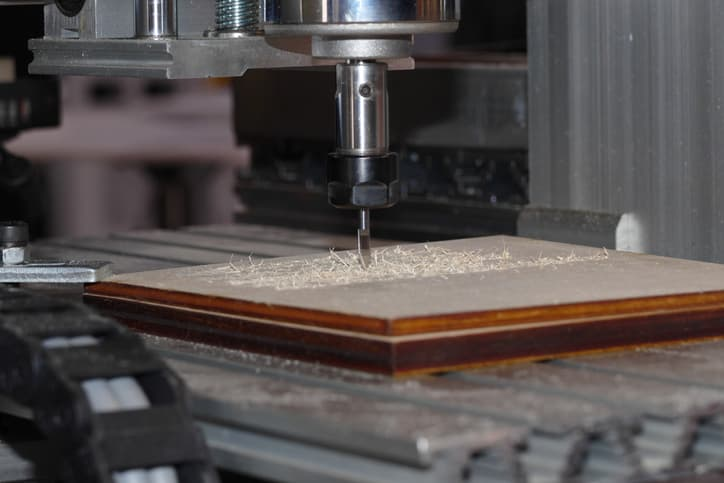
CNC drilling is quite common in many industries including printed circuit boards, metal parts, and plastics. The process offers several advantages over traditional manual drilling, including increased accuracy, repeatability, and efficiency.
CNC Routing
The crude operations of CNC routers are the same as milling machines. Routers generally deal with softer materials like wood while milling is common for tougher metals. Just like any CNC operation, routers also deliver excellent consistency, efficiency, and accuracy.
In the routing process, the workpiece remains completely stationary while the spindle moves in different directions. Since the routing process is for softer materials, the overall rotating speed of the spindle can be quite low. The types of CNC routing machines are numerous, including benchtop routers, gantry routers, and moving gantry routers. The choice of machine and cutting tool will depend on the specific requirements of the workpiece and the desired end product.
Electric Discharge Machining
An electric discharge machine (EDM) is a manufacturing process that utilizes electrical spark discharges to erode away material and produce complex shapes and geometries.
The process works by creating a spark between an electrode and the workpiece. The machinists submerge the workpiece in a dielectric fluid, which isolates the electrical energy and allows for the precise control of the spark. The spark discharge vaporizes the workpiece and removes access material to obtain the required shape.
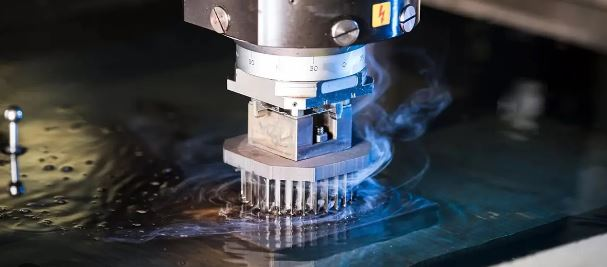
There are two main EDM types: sinker EDM and wire EDM. Sinker EDM uses a consumable electrode to create the spark. Contrarily, wire EDM uses a thin wire that moves to and fro to create the spark.
CNC Plasma Cutting
Plasma cutting is a manufacturing process that uses a high-velocity stream of ionized gas (plasma) to cut conductive materials, such as metals. In plasma cutting, a plasma torch generates a plasma arc between an electrode and the workpiece, which has enough energy to cut through the material.
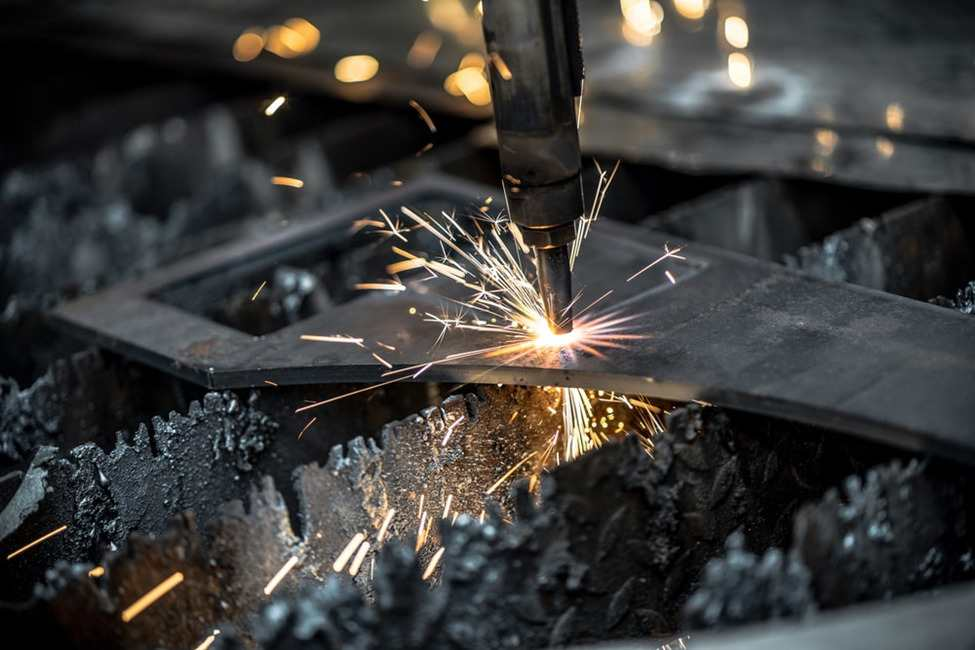
In the next step, the plasma arc melts and vaporizes the material. The process also requires a high-pressure stream of gas (such as air or nitrogen) to blow the molten material away from the cut edge. This results in a clean, precise cut with minimal deformation or discoloration. Thereby, minimizing the requirement for any post-processing.
CNC Laser Cutting
This is another common process that’s popular because of its ability to deliver precise and accurate results in the shortest time. The laser for this process is capable of cutting through most of the materials in the industry that’s one of the reasons why it’s common in most industries.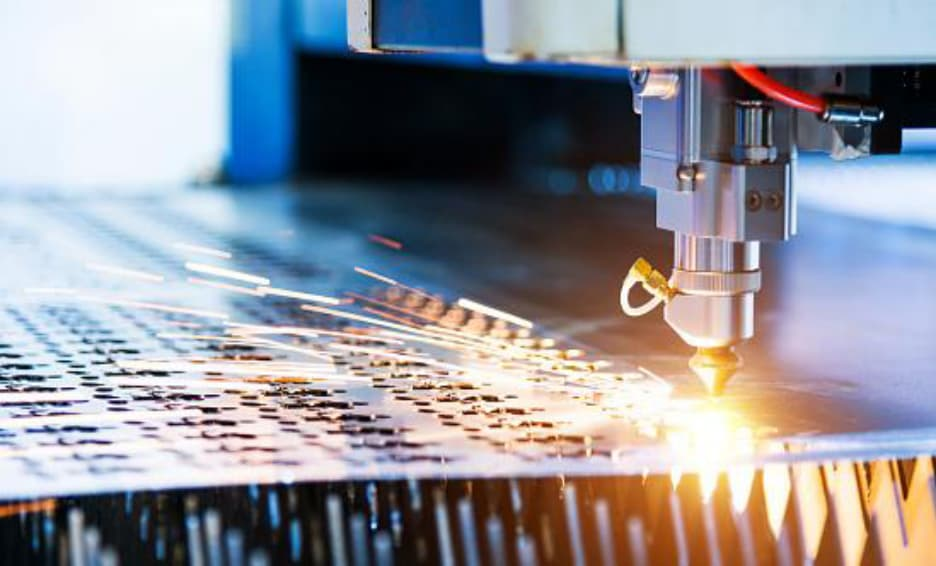
Another reason why CNC laser cutting is so popular is its repeatability. The process works perfectly for large quantities of materials and delivers the most accurate results repeatedly.
Moreover, laser cutting is a very precise process resulting in minimum wastage. Thereby making it ideal for high-value materials common in the aerospace and automotive industries.
Types of CNC Machines
The next question right what is CNC machining is regarding the types of machines. Depending on the overall complexity and cost of the machines, a single machine can perform various operations or can only offer a specific capability.
Here are the most common types of CNC machines that are common in the industry.
- 3 Axis, 4 Axis & 5 Axis Machines
- CNC Routers
- Surface Grinders
- Plasma Cutters
- Laser Cutters
Common CNC Materials and Surface Finishes
CNC machining is a versatile process, but it has its limitations too. Generally, most CNC machines can handle a lot of materials but with varying degrees of precision and accuracy.
Consider the example of Titanium and Aluminum to understand it better. It’s quite difficult to machine Titanium and the results won’t be as precise as they’ll be for Aluminum for the same machines and settings.
Here’s a brief list of common materials that CNC machines generally work with:
- Stainless Steel
- Aluminum
- Titanium
- Copper
- Brass
- Other Steel Alloys
- Plastics
Just like different materials, common CNC machines also offer a few of these surface finishes as well. The following 4 are the most popular in the industry:
- As machined
- Bead blasting
- Powder coating
- Anodizing
- Painting
Common Applications of CNC Machined Parts
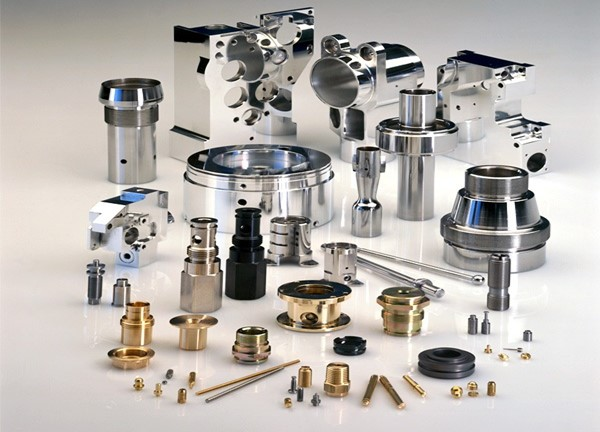
CNC machining is one of those manufacturing processes that are not bound by a specific industry or application. Today, these machines are used almost everywhere in one capacity or another. However, the following industries can make the most of what CNC machining offers:
- Aerospace and defense: CNC machining is common in the manufacturing of components for airplanes. Moreover, it’s also used for defense production. For example; weapons, ammunition, and other similar items.
- Automotive industry: CNC machines produce a variety of parts for cars and trucks. Some examples include engine parts, transmission components, and suspension components.
- Medical devices: CNC machining can produce precision components for medical devices such as implants, prosthetics, and surgical instruments.
- Consumer products: CNC machines can produce a variety of consumer products. This includes electronics, toys, and common household items.
- Machinery and equipment: CNC machining is common in producing components for a wide range of machinery and equipment. Some examples include pumps, valves, and gears.
- Prototyping and R&D: CNC machining is often used to produce prototypes and test parts for research and development purposes.
- Jewelry Production: Intricate jewelry requires precision and repeatability that only CNC machining can ensure. That’s why it’s popular in this industry.
- Molds and dies: CNC machining produces molds and dies necessary for producing plastic and metal products.
- Metal fabrication: CNC machining is common in the production of metal components for a variety of industries, including construction, agriculture, and mining.
Main Pros and Cons of CNC Machining
The CNC machining process has its set of pros and cons. Generally, most of the advantages and disadvantages are not industry specific. However, some qualities may have a greater effect on a certain application due to the overall requirements of costs, quality, and time.
Here are the main advantages that CNC machining offers:
|
Advantages |
Disadvantages |
|
Accurate and high precision: CNC machining allows for precise control of the cutting tool, resulting in parts with tight tolerances and excellent repeatability. |
High initial costs: CNC machines are quite expensive. Moreover, there are many types of them and most of their operations are not interchangeable. Thereby making capital requirements significant for small and medium businesses. |
|
Fast production: CNC machines can operate at high speeds, allowing for faster production of parts. |
Trained operators needed: Unlike traditional machines, CNC operators require significant training before they can start working. Which means they are more in demand and have higher wage requirements. |
|
Enhanced capability: CNC machining ensures consistent quality, which is excellent for a consumer product or large-volume production. |
Increased material wastage in some cases: While efficient, some CNC operations may waste more material compared to the manual process. However, the precision, repeatability, and efficiency they offer may offset this con in many cases. |
|
Complex design: CNC machines can be programmed to produce a wide variety of parts. From simple to complex shapes, everything is possible with the right design considerations and machining approach. |
|
|
Consistency and low human error: CNC machining ensures consistent quality, which is excellent for a consumer product or large-volume production. |
|
|
Cost-effectiveness: CNC machining can be cost-effective for large production runs. Larger production runs utilize economies of scale to reduce the overall cost per piece, which is exactly what the industry demands. |
|
|
Improved safety: CNC machines are significantly safer than their manual counterparts. Generally, the operators control the machine from another room, which keeps them safe from shards, heat, and exposure to other threats. |
|
|
Reduced maintenance requirements: Since most of the processes are automatic, they are optimized to perform consistently without any intervention. Thereby lowering the overall maintenance requirements. |
|
NINGBO FUERD MECHANICAL CO., LTD
Website: https://www.fuerd.com
